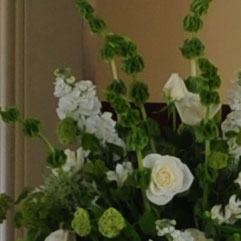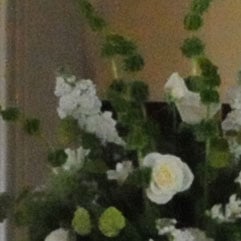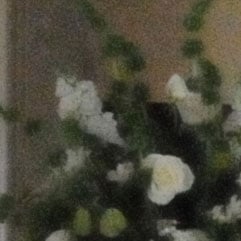Canon EOS 7D
-
-
Written by Gordon Laing
Canon EOS 7D vs Canon EOS 50D vs Canon EOS 5D Mark II High ISO Noise (JPEGs using default settings)
Canon EOS 7D vs Canon EOS 50D vs Nikon D300s High ISO Noise (JPEGs using default settings)
To compare noise levels under real-life conditions we shot this scene with the Canon EOS 7D, EOS 50D and Nikon D300s within a few moments of each other using their best-quality JPEG settings and at each of their ISO settings. Scroll up for comparisons against the Canon EOS 5D Mark II and see the next page for RAW results. Both Canons were fitted with the Canon EF 24-105mm f4L IS lens, while the D300s was fitted with the DX 16-85mm VR, all set to f8 in Aperture Priority mode and adjusted to deliver the same field of view. Noise Reduction was set to the default options on each camera, although we disabled any automatic contrast-enhancing modes as these can artificially introduce noise. As such, Auto Lighting Optimizer on both Canon bodies and Active D-Lighting on the Nikon were disabled. The image above was taken with the Canon EOS 7D at 100 ISO with an exposure of 1.3 seconds and with the lens set to 24mm f8; the original Large Fine JPEG measured 5.77MB. The crops below are taken from the area marked with a red square and presented here at 100%. The most obvious difference between the Canon EOS 7D and Nikon D300s crops below is of course their size: with 50% more pixels in total, the EOS 7D’s crops are showing a noticeably smaller area, although the difference in actual resolved detail may not be as great as you’d expect. At 100 ISO, the D300s delivers a very smooth and clean image, with no evidence of noise despite a reasonable degree of sharpening. The sharpening roughly matches that of the EOS 7D here, while the EOS 50D is again looking quite soft in comparison. At 200 ISO, the very faint textures in the background of the EOS 7D crops has become slightly more apparent, although again nothing to worry about. That said, the D300s is a little cleaner at this point. From this point on, the EOS 7D and D300s exhibit similar noise characteristics. Interestingly Canon has adopted a similar approach to Nikon here, allowing noise speckles to become visible and avoiding the smearing and soft-looking output from the EOS 50D. From 400 to 3200 ISO, both cameras share a similar style using their default JPEG settings. The Nikon D300s enjoys a slight edge, most noticeably at 800 ISO, but there’s not a great deal in it – and remember this is comparing samples at 100%, whereas if you printed images from both cameras at the same size, the artefacts on the EOS 7D would appear smaller. At 6400 ISO, the maximum sensitivity of the D300s, the Nikon takes a noticeable step for the worse, and most would prefer the EOS 7D’s output at this point – although neither look great. Now head over to our Canon EOS 7D RAW Noise results to see the benefits of shooting in this format.
|
Canon EOS 7D results continued…
Real-life resolution JPEG / RAW / High ISO Noise JPEG / RAW
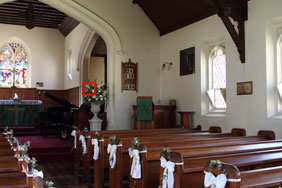 |
| ||||
To compare noise levels under real-life conditions we shot this scene with the Canon EOS 7D, EOS 50D and EOS 5D Mark II within a few moments of each other using their best-quality JPEG settings and at each of their ISO settings. Scroll down for comparisons against the Nikon D300s and see the next page for RAW results.
Each camera was fitted with the same Canon EF 24-105mm f4L IS lens, set to f8 in Aperture Priority mode and adjusted to deliver the same field of view. Noise Reduction was set to the default options on each camera, although we disabled any automatic contrast-enhancing modes as these can artificially introduce noise. As such, Auto Lighting Optimizer on all the Canon bodies was disabled. The image above was taken with the Canon EOS 7D at 100 ISO with an exposure of 1.3 seconds and with the lens set to 24mm f8; the original Large Fine JPEG measured 5.77MB. The crops below are taken from the area marked with a red square and presented here at 100%.
The Canon EOS 5D Mark II kicks off this sequence at 50 ISO, with an unsurprisingly clean and detailed result. The EOS 50D and EOS 7D join-in at 100 ISO, and already there’s a visible difference in their default processing styles. The EOS 7D delivers JPEGs with greater sharpening using its default settings than either the EOS 50D or EOS 5D Mark II. This is beneficial at lower sensitivities, and allows the EOS 7D to avoid the relatively soft-looking output of the EOS 50D when both are set to their defaults.
The softer processing of the EOS 50D is however more forgiving on visible noise, and this is apparent at 200 ISO when subtle background textures have already become visible on the EOS 7D. At 400 ISO, these textures have become more obvious on the EOS 7D, but they’re still far from obtrusive. It is however revealing to note the EOS 5D Mark II remains very clean.
With the sensitivity increased to 800 ISO, the EOS 7D exhibits slightly more noise, although the EOS 50D is also suffering, behind its softer processing. Pixel-peepers may notice very slight evidence of noise on the EOS 5D Mark II at this point, but it’s certainly nothing to worry about.
At 1600 and 3200 ISO, there’s a gradual decline in quality from all three models, with the EOS 50D becoming patchier, the EOS 7D becoming noisier and the EOS 5D Mark II becoming softer.
At 6400 ISO, the EOS 50D and EOS 7D take a noticeable turn for the worse, although the 7D is preferable to the 50D at their maximum sensitivities of 12800 ISO. The EOS 5D Mark II continues to offer a maximum sensitivity of 25600 ISO, but it ain’t pretty.
From these first results we can conclude the EOS 7D exhibits more visible noise than the EOS 50D when shooting JPEGs, although as you’ll see in our RAW results, much of this is down to the sharpening applied by default on each camera; match their sharpening levels and the artefacts become pretty similar. As you’d expect given its physically larger sensor, the EOS 5D Mark II enjoys a comfortable lead throughout, although its output is far from perfect at the highest sensitivities.
Now scroll down to see how the EOS 7D compares against its arch rival, the Nikon D300s, or head straight over to our Canon EOS 7D RAW Noise results to see the benefits of shooting in this format.
Canon EOS 50D JPEG with Canon EF 24-105mm IS in-camera default settings |
Canon EOS 7D JPEG with Canon EF 24-105mm IS in-camera default settings |
Canon EOS 5D Mark II JPEG with Canon EF 24-105mm IS in-camera default settings | ||
 |
 |
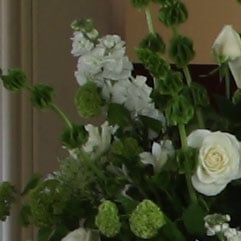 | ||
50 ISO not available |
50 ISO not available |
L (50 ISO) | ||
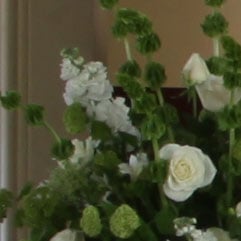 |
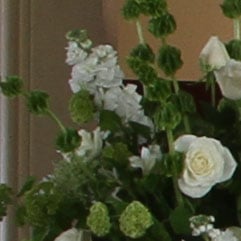 |
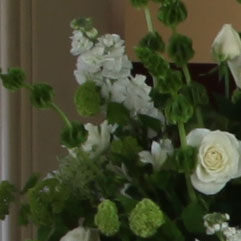 | ||
100 ISO |
100 ISO |
100 ISO | ||
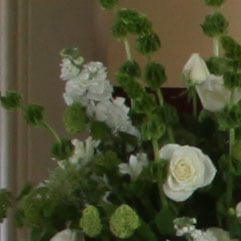 |
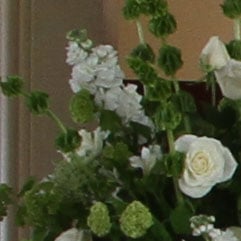 |
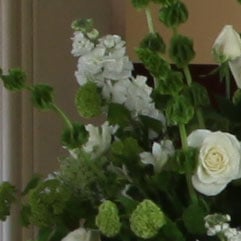 | ||
200 ISO |
200 ISO |
200 ISO | ||
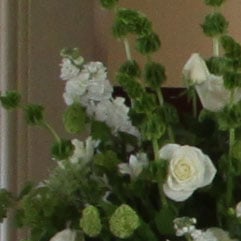 |
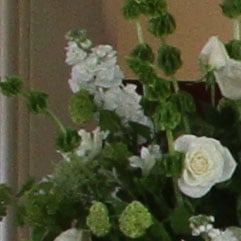 |
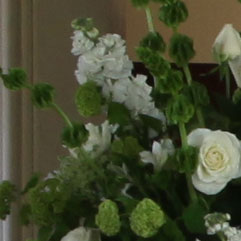 | ||
400 ISO |
400 ISO |
400 ISO | ||
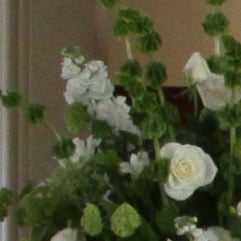 |
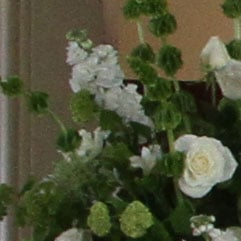 |
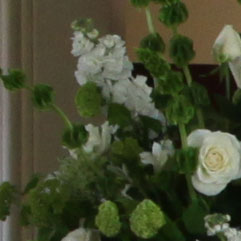 | ||
800 ISO |
800 ISO |
800 ISO | ||
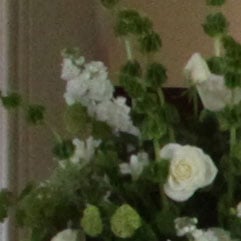 |
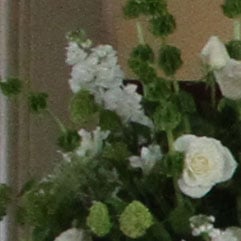 |
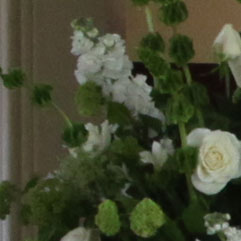 | ||
1600 ISO |
1600 ISO |
1600 ISO | ||
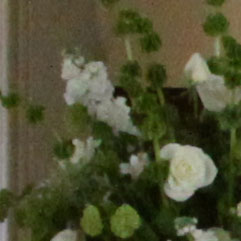 |
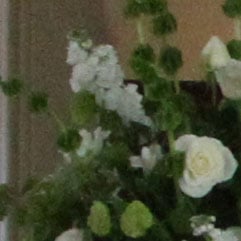 |
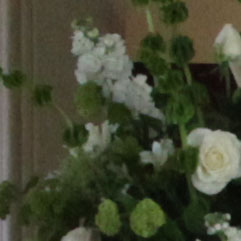 | ||
3200 ISO |
3200 ISO |
3200 ISO | ||
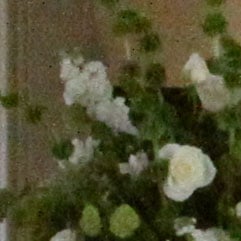 |
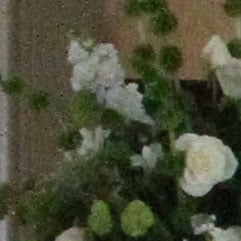 |
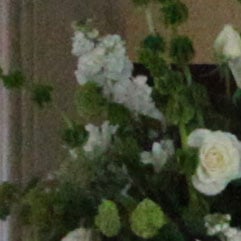 | ||
H1 (6400 ISO) |
6400 ISO |
6400 ISO | ||
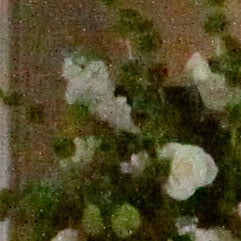 |
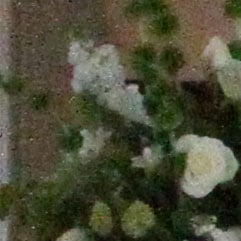 |
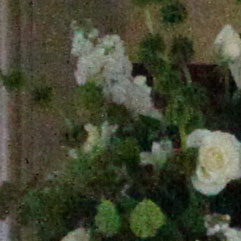 | ||
H2 (12800 ISO) |
H (12800 ISO) |
H1 (12800 ISO) | ||
 |
 |
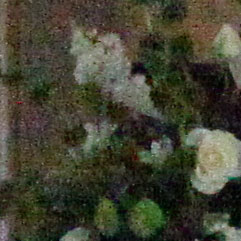 | ||
25600 ISO not available |
25600 ISO not available |
H2 (25600 ISO) |

